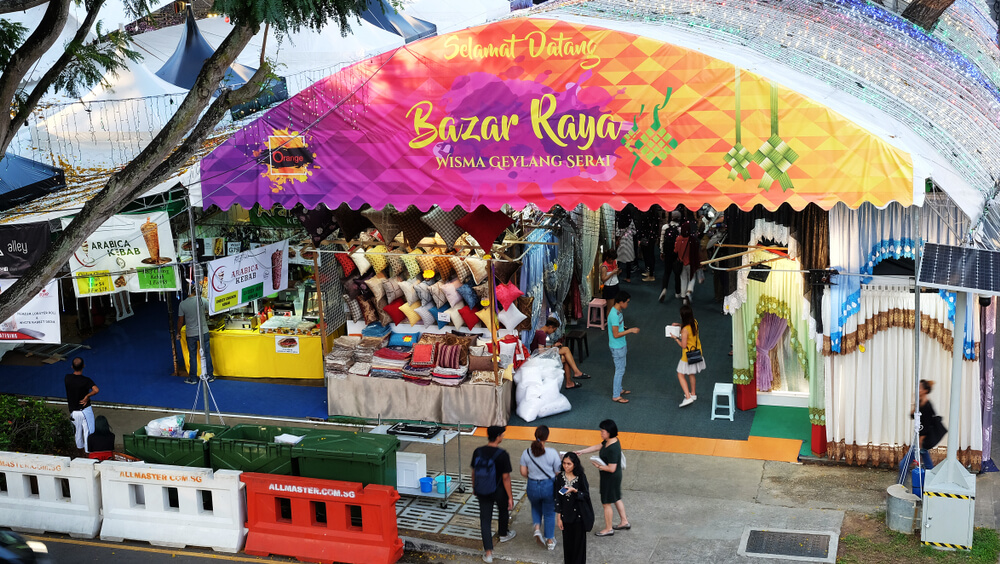Uncategorized
The History of Hari Raya in Singapore
Hari Raya 2023 is right around the corner once again, and many Muslims in Singapore have begun their Ramadan preparations!

This festival is also known as Eid al-Fitr, and is one of the most significant festivals in the Muslim calendar. It’s a celebration that marks the end of Ramadan, the month-long period of fasting and spiritual reflection.
Let’s take a quick history lesson on what exactly is Ramadan, before delving into the history of Hari Raya here in Singapore.
What Is Ramadan?
Ramadan is the ninth month of the Islamic calendar and is considered to be one of the holiest months in the Islamic religion. Muslims around the world observe a month-long fast during Ramadan, abstaining from food, drink, smoking and other physical needs during daylight hours. They break their fast at sunset with a meal known as iftar, which often includes dates, water, and other traditional foods.

Fun fact – the month of Ramadan is based on the lunar calendar. This means that the start of the month is determined by the sighting of the new moon. Muslims begin fasting on the first day of Ramadan, and continue until the sighting of the next new moon. That would mark the end of the month and the start of Hari Raya. The last ten days of fasting are considered to be particularly blessed, and many Muslims spend this time in intense prayer and devotion.

In addition to fasting, Ramadan is also a time of giving and generosity. Muslims are encouraged to donate to charity, and many communities and groups organise food drives and other initiatives to support those in need.
The History of Hari Raya in Singapore
The celebration dates back to the 19th century when the island was more of a bustling trading port. It was during this time that Muslim traders and immigrants from India, Indonesia, and the Malay Archipelago settled in Singapore. They brought rich cultural heritage and traditions with them as they settled down in Singapore.

The first Hari Raya celebrations in Singapore were simpler ones. Families usually gathered together to break their fast and exchange gifts. As time passed, the celebrations became more elaborate and involved larger community gatherings, including feasting, prayer, and socialising.
Local Muslims started organising Hari Raya bazaars to sell traditional food such as ketupat, rendang, and kueh, along with clothes and other items. These bazaars then grew to become an integral part of the Hari Raya celebrations.

Unfortunately during the Japanese occupation of Singapore in World War II, Hari Raya celebrations were banned. The Muslim community in Singapore was forced to celebrate in secret. After the war ended, the celebrations resumed, and the community began to rebuild and revive their traditions.
After Singapore gained independence in 1965, the government recognized the importance of preserving the country’s diverse cultural heritage. Ramadan and Hari Raya were made into official holidays and celebrations, and are celebrated by Muslims and non-Muslims alike.
As Singapore gained independence in 1965 and developed into a modern, multicultural city-state, the government recognized the importance of preserving the country’s diverse cultural heritage. Today, Hari Raya is celebrated by Muslims and non-Muslims alike, with the government declaring it a public holiday for all.

Even in recent years, the government has encouraged Singaporeans to participate in interfaith activities during Hari Raya. This is to promote understanding and harmony between different religious communities. Other communities donate to charity and carry out volunteer work, organise pop ups and bazaars in celebration of Muslim-owned businesses, and some even fast alongside their Muslim friends!
Celebrate Hari Raya With Simply Blooms This Year!
If you’re looking for Hari Raya gifts or Hari Raya hampers, shop at Simply Blooms today! Check out our shop for the best, affordable flowers online. From bloom boxes to hand wrapped bouquets, our talented florists do them all!

Shop today and enjoy free, same day flower delivery for orders made before 3PM!



